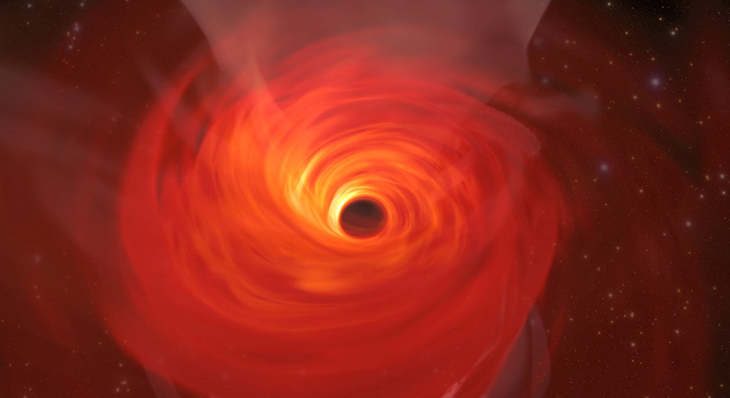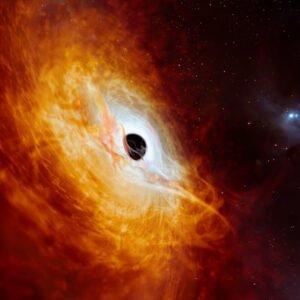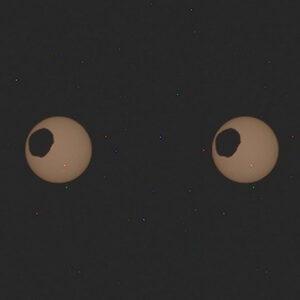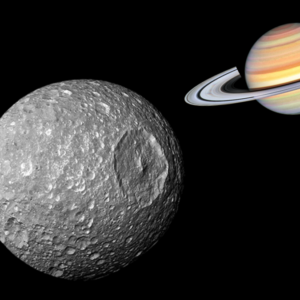
Space is a miasma of both knowns and unknows. We have yet to uncover what’s there. In fact, scientists have been hovering over their telescope for years just to find out more about this mysterious area. Technology has continuously been developed in order for them to capture clearer images.
For the first time ever, they were able to capture the black home that holds the stars and planets that make their home in the Milky Way. This black hole is found at the very heart of our galaxy, and it is with hope that they can uncover its secrets.
The massive black hole is the very thing that binds our galaxy together. Credit can be given to the powerful it has, and the first ever image shows how it looks.
The scientists were able to capture the image by collaborating telescopes from all four corners of the globe, making sure that they all sync together, collect several millions of gigabytes of data. They were able to present the burning accretion disk of Sagittarius A, which is the black hole’s official name.
How can one be able to capture a phenomenon that sucks in light from around? This may have posed a problem because the absence of light is something that’s invisible. We only gained images of it through artists’ renditions of it. Fact is, a black hole’s gravitational pull is always pulling in, and actually belching out, hot gases and radiation. As a result, an accretion disk is formed in the area.
There’s a vortex of very hot energetic material that spirals down the black hole. This is indicative of its presence, This is akin to throwing a can of paint into an invisible man in order to see their form. The photograph that was revealed to the world was because of a project. The company behind this is the Event Horizon Telescope network (EHT). They actually won Science Magazine’s photo of the year in 2019 for their first-ever image of a black hole which they named called Messier 87. Those who have read the magazine before the pandemic may recall this. The photograph shows a glowing orange ring on a black field that was plastered on the front page of practically all news outlets.
“But this new image is special because it’s our supermassive black hole,” said Prof. Heino Falcke, a scientist of German-Dutch descent. He was the one who led the European team behind the imaging of M87. “This is in ‘our backyard’, and if you want to understand black holes and how they work, this is the one that will tell you because we see it in intricate detail,” he also said. The professor is from Radboud University Nijmegen and he spoke to BBC News about this.
How It Was Made Possible
The black hole is 26,000 light years away from earth. The Sagittarius A is four million times larger than our galaxy’s Sun as well as the event horizon. The latter is the part of space around a black hole where the laws of physics don’t apply in terms of its presence. The width is around similar to Mercury’s orbit as it circumnavigates around Sun. In rough estimates, it around 40 million miles across.
The discovery came as a surprise. The numbers have left them staggering for further clues to give them more reason. More importantly, all the images used to build and bring together the finished product of Sag. A were collected during the same observation period that provided the world with the Messier 87 image.
Because Messier comes from a neighboring galaxy, the distance the light traveled to get to earth makes the image appear static. The Sag. A is much closer in proximity, which meant that the plasma in the accretion disk, moving at around 190,000 miles per second, was much more challenging to put together to create a more precise image.
In fact, Sag A. is a thousand times smaller than M87 and the structure of its disk changes a thousand times faster as well. Considering the combination the lesser time the light needed to arrive meant that this was going to be a lot more difficult. They made sure that the image they created didn’t just look like a large orange blur.
As for the brighter parts of the image, they hypothesize that these are areas where radiation is coming right towards the earth.
Below, the scientists created a simulation of what you might witness if you went to the very center of the galaxy and had a chance to gaze at Sag. A via the use of an optical tool that caught sensitive radio frequencies from the black hole.
What are your thoughts? Please comment below and share this news!
True Activist / Report a typo


